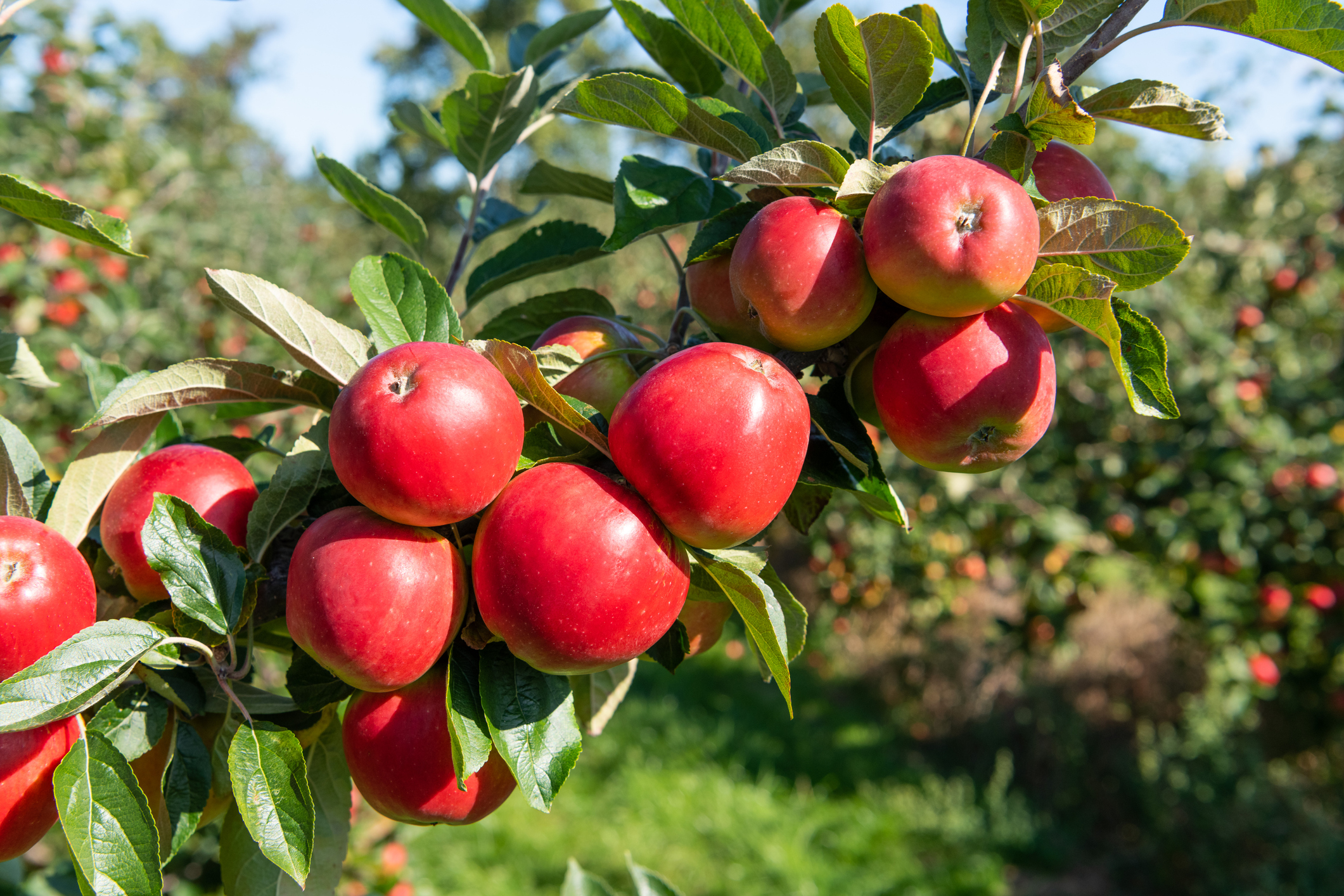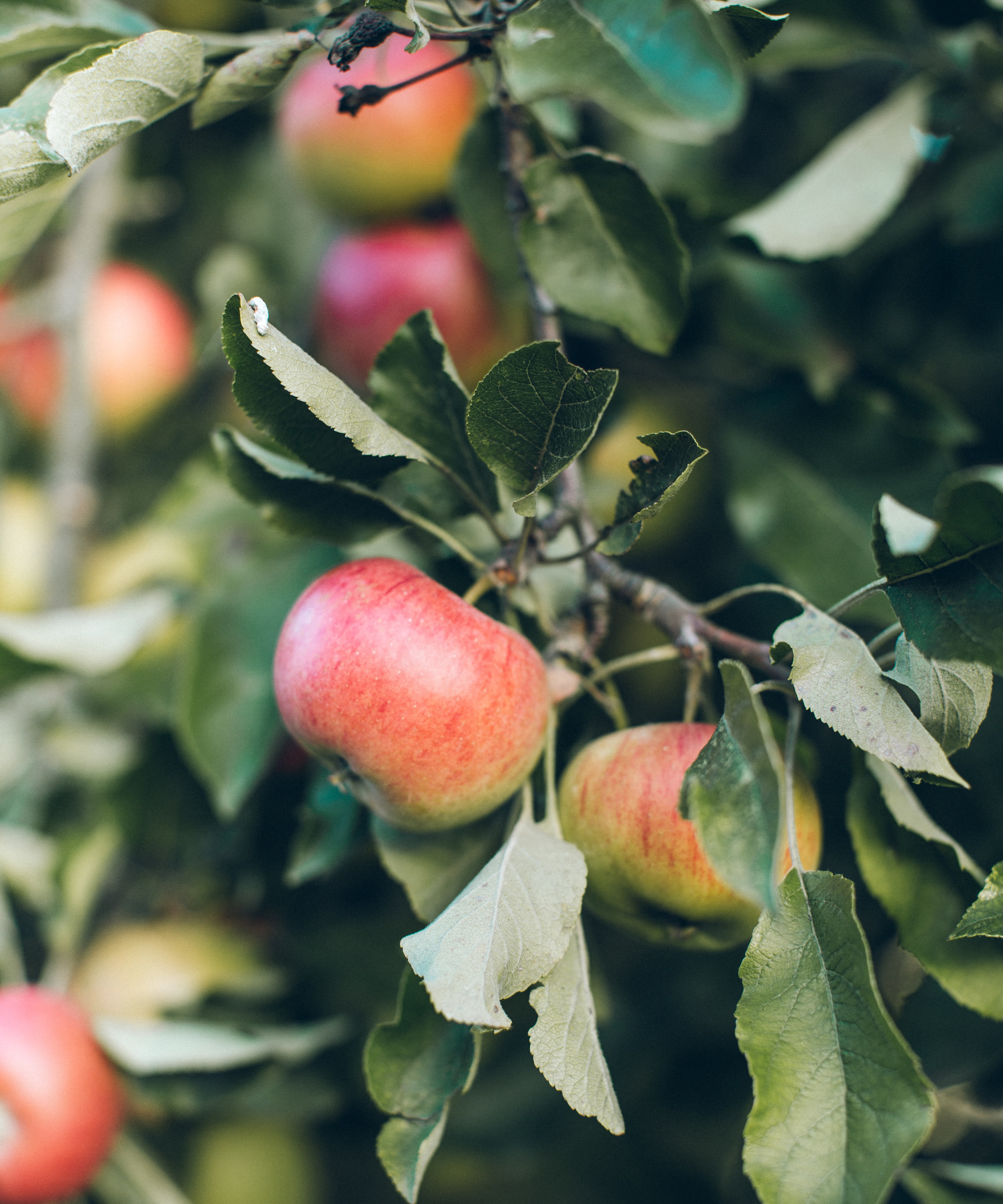How to plant apple trees
Use our expert guide to planting apple trees to how to get this gorgeous fruit into your yard


Planting an apple tree is a great move. The ultimate in garden trees, apple trees are easy to grow, full of character, and not too big, ideal for the average small yard. As well as providing tasty fresh fruit in late summer and autumn, apple trees are a mass of beautiful pink-white blossom in springtime.
Below, gardening expert Hazel Sillver explains how to plant apple trees – amongst the best fruit trees your yard can have.
When to plant apple trees

Apple trees should be planted between November and March on a day when the ground is not frozen or waterlogged.
Where to plant apple trees
Apple trees do best if planted in well-drained, fertile, deep soil in sheltered sun. They will tolerate temperatures down to -4ºF (-20°C). Apples grown on M9 or M26 rootstock can be enjoyed as container gardening ideas. To save space, apple trees can be trained against walls into cordon, fan, or espalier shapes, or bought ready-trained.
How to plant an apple tree
These steps to plant an apple tree will ensure it has the best chance of growing healthily.
1. Dig out a hole
Dig a hole no deeper than the roots, but three times wider than the root system.
2. Loosen the soil
Loosen the soil beneath and to the sides with a fork, and dig in organic matter, such as compost.
3. Stake the apple tree
Insert a stake to support the tree as it grows.
4. Backfill
Backfill with soil and press down to prevent air pockets.
5. Attach the stake
Attach the apple tree to the stake with an adjustable tree tie.
How to care for apple trees
Water young trees regularly to help them establish, and water all but very mature trees during summer drought and when the fruit begins to swell.
Thin fruit, if necessary, in midsummer, to ensure the apples ripen well and to prevent branches breaking. Thin to 1-2 fruits every 6in (15cm).
Harvest when the fruit pulls away from the tree very easily and the wind has started to toss apples off the tree. Eat early season apples straightaway. Mid-season varieties can be stored for 1-2 months, and late-season crops can keep for up to 6 months.
Prune standard apple trees in winter, and prune cordons, espaliers, and fans in summer. You can find out how to prune an apple tree in our main guide, but the basics are that you should remove dead, diseased, crossing, rubbing, weak, or damaged branches with a sharp saw, cut back previous year’s growth on the main branches by one third to a bud facing in a suitable direction, and take out large shoots growing inwards towards the center of the tree. Don't, however, prune young side shoots, unless they are crossing or congested.
Fertilize apple trees annually to keep them healthy. Feed fruit trees with multi-purpose fertilizer every spring.
Best apple trees to plant
Buy a named cultivar from a reputable specialist supplier. Karim Habibi, owner of Keepers Fruit Nursery, recommends ‘Discovery’ (an early dessert cultivar with good disease-resistance and white blossom) and ‘Egremont Russet’ (a mid-season honey-flavored dessert apple with pink blossom).
While Jon Munday, manager of Blackmoor Fruit Nurseries, recommends ‘Red Falstaff’ and ‘Scrumptious’, which are both self-fertile dessert apples with pink blossom.
Most apples require other apple trees in the neighborhood in order to produce fruit. Self-fertile varieties (such as ‘Scrumptious’) will fruit on their own, but greatly benefit from having other apples nearby. An apple tree is not an island, which is a good excuse to have another cloud of snowy blossom in the garden in spring.
Apples are available on various different rootstocks, which determine their eventual size. For instance, M26 and MM106 rootstocks can be used to create elegant espalier apples. As well as size, decide whether you want white or pink blossom, a dessert or cooking apple, and a self-fertile or reliant variety, and ask your supplier to recommend a few choices based on those specifics. It’s also a good idea to state that you want a cultivar with good disease resistance.
Once established, your apple tree will be a low-maintenance joy that adds structure, charm, and spring blossom to the garden, as well as a supply of healthy, delicious fruit.
How to use apple trees
‘Columnar apple trees allow you to easily punctuate smaller spaces with their upright shape,’ says Oregon-based landscape architect and garden designer Bethany Rydmark. ‘Apples grown on dwarf rootstock suit small spaces. And where there is room to branch out, a standard size apple tree can become a focal point in a garden, or multiple trees could create an orchard effect.’
Apples are also superb when trained as espaliers against walls. ‘I have three apples espaliered across the back of my yard at home as a fence,’ says Ohio-based garden designer Ethan McGory. ‘Train them along a fence or trellis by tying young branches to supports and pruning away unwanted branches. Trees grown this way are especially easy to maintain and make beautiful sculptural additions to the garden.’
Another option is to grow apples as free-standing features. ‘Apples also look great in allees or in grids along paths,’ says Ethan. ‘You could choose cultivars tall enough to walk under when they reach full size and plant them close enough together to allow the canopies to touch when fully grown. These symmetrical arrangements can be amazing in bloom.’
Why plant apple trees?
‘Apple trees are lovely additions to gardens,’ says Illinois-based landscape designer Carolyn Gange, ‘offering beautiful spring flowers and the reward of fresh fruit in the fall.’
For many people, the apple tree also has the added element of being a prominent tree in folklore, which means it has a magic about it. Plus, it was a beloved garden tree in the ancient world.
‘An apple tree can bring the weight of myth and history to a garden,’ says Oregon-based landscape architect and garden designer Bethany Rydmark. ‘They enhance the present day with echoes of old stories, as well as providing us with a harvest of fruit!’
Sign up to the Homes & Gardens newsletter
Design expertise in your inbox – from inspiring decorating ideas and beautiful celebrity homes to practical gardening advice and shopping round-ups.

Lucy Searle has written about interiors, property and gardens since 1990, working her way around the interiors departments of women's magazines before switching to interiors-only titles in the mid-nineties. She was Associate Editor on Ideal Home, and Launch Editor of 4Homes magazine, before moving into digital in 2007, launching Channel 4's flagship website, Channel4.com/4homes. In 2018, Lucy took on the role of Global Editor in Chief for Realhomes.com, taking the site from a small magazine add-on to a global success. She was asked to repeat that success at Homes & Gardens, where she has also taken on the editorship of the magazine.
-
 Plants never to grow next to fruit trees
Plants never to grow next to fruit treesExpert advice on which plants to keep away from fruit trees to encourage a healthy harvest
By Jacky Parker Published
-
 Martha Stewart's tips for arranging daffodils are unbelievably simple and effective – it's the only flower advice you need this springtime
Martha Stewart's tips for arranging daffodils are unbelievably simple and effective – it's the only flower advice you need this springtimeMartha shows us that we can create gorgeous bouquets of this seasonal flower by simply trimming the stems and placing them in specific vases
By Hannah Ziegler Published